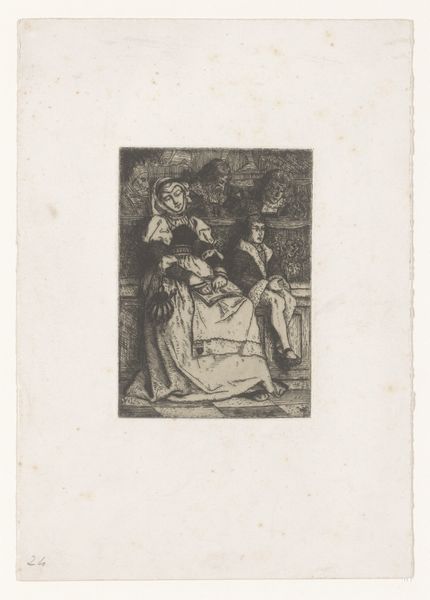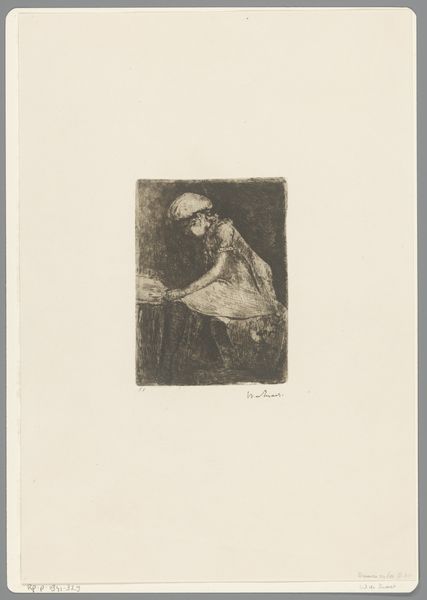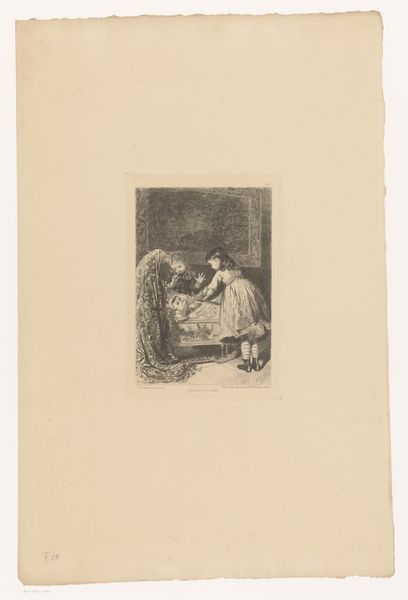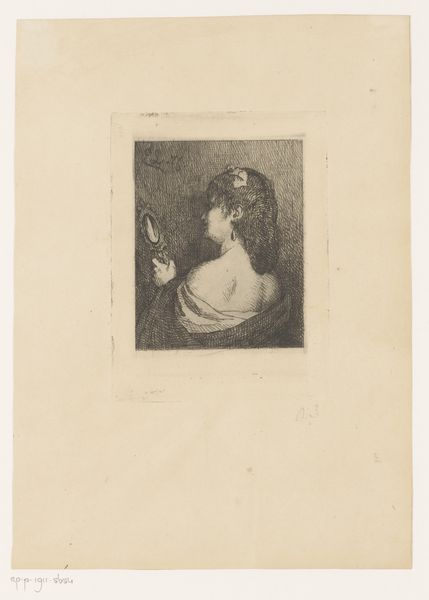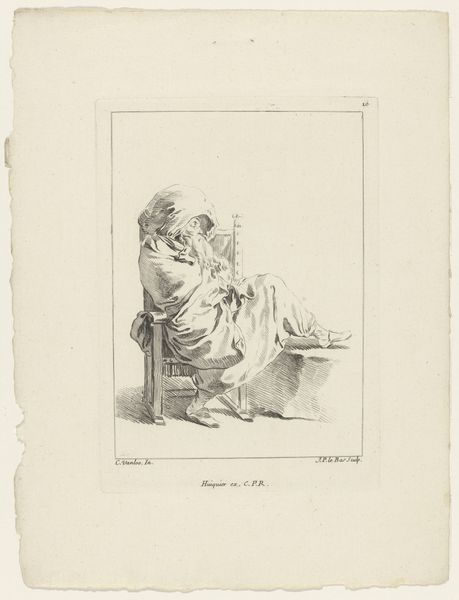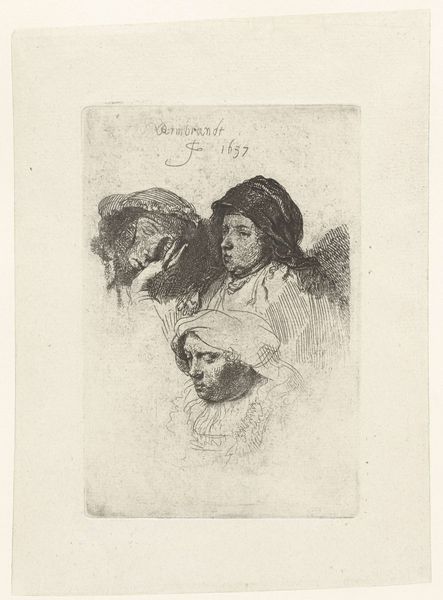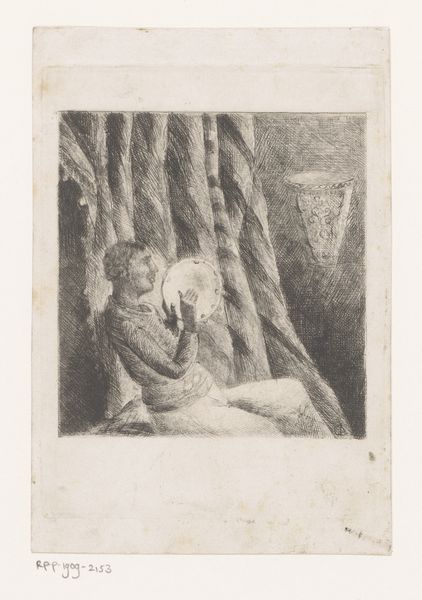
print, engraving
#
portrait
#
medieval
# print
#
figuration
#
line
#
engraving
#
monochrome
Dimensions: height 141 mm, width 129 mm
Copyright: Rijks Museum: Open Domain
Curator: Here we have a print titled "Zittende monnik met boek en staf," or "Seated Monk with Book and Staff," created before 1874. The artist, Bruno Boucquillon, used an engraving technique for this piece. Editor: It feels so immediate. The monk, bathed in a somewhat melancholic light, seems lost in contemplation. The lines are simple, almost minimalist, yet convey such depth of emotion. Curator: Boucquillon likely draws upon a rich visual vocabulary associating monastic figures with erudition and humility. How do you interpret the recurring presence of the book in his composition? Editor: The book! Absolutely central. It’s not just about knowledge. I see the book and the monk’s posture, his hands clasped, almost shielding him. It speaks to an interiority, a protective stance against a changing world maybe? A retreat into faith and knowledge, shielded from exterior turbulence. Curator: Perhaps. In the mid-19th century, the cultural role of the monastery was heavily debated. Monasteries were viewed sometimes as bastions of tradition but also increasingly by secular states, suspected of reactionary politics. So I find the lack of detail—that is a print medium—quite remarkable given these forces at play. Editor: It definitely seems that the starkness allows the artist to distill this image down to its most fundamental components: the individual and the symbolic weight they carry. It strips away anything extraneous and forces us to confront the very essence of devotion. Curator: So in many respects, that image can exist as an artifact of 19th-century anticlericalism where the tradition in general fell under question. It's an era defined by those sorts of discussions around institutional faith and power. Editor: Absolutely, Bruno Boucquillon uses those discussions and sentiments as building blocks to create something truly memorable. He really succeeds in conveying how certain traditional roles evolved alongside massive paradigm shifts that challenged what it meant to practice institutionalized spirituality. Curator: Precisely. It underscores how art became the great battleground for negotiating these values and principles for the modern world. Editor: Yes, indeed, a moment of personal reflection intertwined with vast historical shifts— quite stunning.
Comments
No comments
Be the first to comment and join the conversation on the ultimate creative platform.

